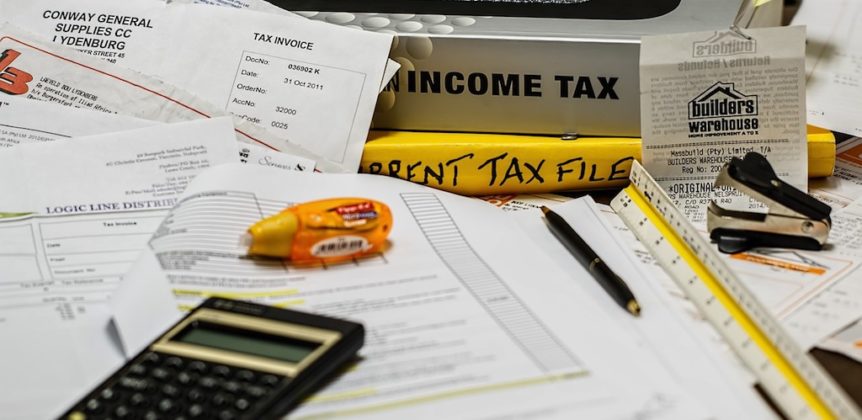You’re proud to own your own business in New York, but it’s likely you have some apprehension about tax season. Small business tax preparation can be confusing, but with some research and our five essential tips for filing taxes in New York you’ll be ready to fill, sign, and submit your forms with confidence. There are a few basic things you need to understand, such as what forms you need, how to organize your record books and filing deadlines. After the basics, you’ll also want to get an understanding of laws and mandates from the New York State Department of Taxation that may affect your business. We cover all of that in our five tips below. Read on to make filing your business’ taxes easier this year.
1. Know which tax forms are right for your business.
What type of business do you have? The four business classifications are Sole Proprietor, Partnership, Limited Liability Company (LLC), S Corporation, and C Corporation. As a small business, you most likely fall into one of the first three. Here definitions for each business type and corresponding tax form requirement according to New York laws:
| Business Type | Tax Forms*
*additional forms may be required. |
Sole ProprietorSomeone who owns an unincorporated business by himself or herself.
|
1040, U.S. Individual Income Tax Return |
PartnershipA relationship between two or more people who join to carry on a trade or business. A partnership does not pay income tax, but each partner includes his or her share of the partnership’s income or loss on his or her individual tax return. See NY Partnership Definitions and Laws
|
1065, U.S. Return of Partnership Income (filed by the partnership)
1040, U.S. Individual Income Tax Return (filed separately by each individual within the partnership) |
Limited Liability Company (LLC)A business with one or multiple owners called members. Members can include individuals, corporations, other LLCs and foreign entities. The structure and regulations imposed on LLCs is determined by the state. |
If classified as single-member LLC/”disregarded entity”: 1040, U.S. Individual Income Tax ReturnIf classified as a partnership: 1065, U.S. Return of Partnership IncomeAnd 1040, U.S. Individual Income Tax Return by each member If classified as a C corporation:
If classified as an S-corporation: |
C CorporationA corporation conducted as a separate tax-paying entity whose profits are distributed to shareholders. The profits of a corporation are taxed when earned and taxed again when distributed to shareholders, which creates a double tax. See NY Corporation Definitions and Laws
|
1120, U.S. Corporation Income Tax Return
1040, U.S. Individual Income Tax Return to be filed by corporation shareholders 1120-W, Estimated Tax for Corporations 941, Employer’s Quarterly Federal Tax Return 943, Employer’s Annual Federal Tax Return for Agricultural Employees 940, Employer’s Annual Federal Unemployment Tax Return |
S CorporationA corporation that elects to pass corporate income, losses, deductions, and credits through to their shareholders for federal tax purposes. Because shareholders report the flow-through of income and losses on their personal tax returns, S corporations avoid double taxation.
|
1120S, U.S. Income Tax Return for S Corporation
1040, U.S. Individual Income Tax Return to be filed by corporation shareholders 1120-W, Estimated Tax for Corporations 941, Employer’s Quarterly Federal Tax Return 940, Employer’s Annual Federal Unemployment Tax Return |
Table 1. End of Year Tax Forms by Business Type
2. Maintain accurate records.
When it comes time to claim your small business deductions, it is important to have receipts, bank statements and records to support your claims. You should keep your bank statements, deposit slips, canceled checks, invoices, sale records, cash register receipts, and credit card sales slips. Keep your records on hand for at least three years in case the Tax Department requests verification for any credits, income, deductions, or expenses claimed on your tax filings. To be prepared for tax season at the end of the year, it’s best to have standard taxes and account procedures put in place early. For advice, visit our Blatner & Mineo Small Business Guide to Taxes and Accounting.

The New York Department of Taxation provides checklists to help small businesses ensure they have acceptable records. Their business recordkeeping checklist will inform you of all the records you need to keep. Some common transactions to keep record of include:
- Gross income receipts
- Sales tax
- Purchase receipts
- Business expenses
- Travel
- Transportation
- Entertainment
- Gifts
- Assets
- Employment taxes
Learn About Blatner & Mineo Talk to a CPA Today
3. Be aware of New York tax laws specific to your business.
Some small businesses in New York have to follow additional tax filing laws specific to their business type or industry. If your business produces alcohol or works in agriculture, highway transportation,or arts and cultural affairs you likely have specific tax laws to follow that differ from standard tax filing procedures. Small businesses should familiarize themselves with industry-specific New York tax laws prior to tax season.
4. Comply with New York State E-file mandates.
If you are a partnership or corporation, you may be required to E-file your taxes. If you or your preparer fail to electronically file your tax documents, you’re subject to a $50 penalty for each tax document not electronically filed, a $50 penalty for failure to pay electronically, and a penalty specific to your tax type for failure to file. When E-filing your tax documents, be sure to use a New York State Department of Taxation and Finance approved E-file-approved commercial software.

5. Submit your taxes on time.
Small businesses are generally required to submit their taxes by April 15, the same deadline for individual tax filing. If April 15th falls on a holiday or weekend, the due date is shifted to the next business day. C corporations must file by the 15th day of the fourth month following the close of the tax year (usually April 15), and S corporations must file by the third month following the close of the tax year (usually Mach 15). Late filing and late payments are subject to penalties and interest. Some small businesses may be eligible for an extension if they cannot file on time.
To stay on track, download our 2017 Tax Filing Calendar.

